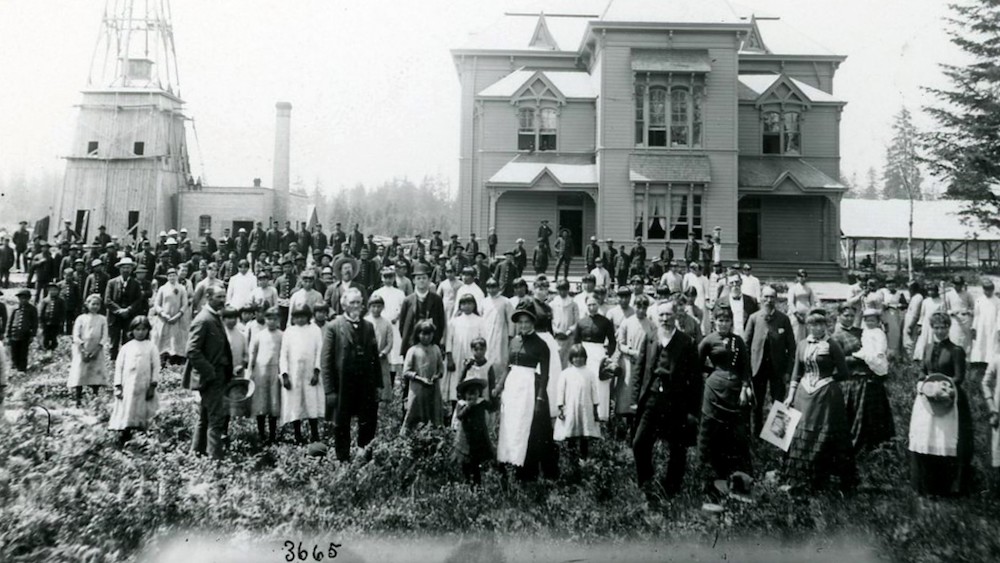
- Details
- By Jenna Kunze
This month, we’re compiling questions that our readers are asking us about Indian Boarding Schools and offering answers as reported by our team.
Today’s reader question about Indian Boarding Schools comes from Loretta O., who asked us:
What is the number of children buried at Chemawa Indian Boarding School?
Our reporter Jenna Kunze, who has written nearly half of our 100-plus stories about Indian Boarding Schools, provides this answer.
According to Native News Online's interview with the expert who has been surveying the grounds of Chemawa Indian Boarding School in central Oregon for eight years, the school has at least 222 unmarked graves belonging to Native children.
In January, Native News Online interviewed Marsha Small (Northern Cheyenne), a doctoral candidate at Montana State University who has been working with ground-penetrating radar for almost a decade. She is researching its use to locate and document deaths at two Indian boarding-school cemeteries: Chemawa Indian School, north of Salem, Ore., and another on-reservation boarding school in South Dakota.
Since 2014, Small has been surveying the cemetery at Chemawa, the longest-running Indian boarding school in the country. Opened in 1880, it is still operating today, now under the federal government’s Bureau of Indian Education. Through her work, Small located 222 unmarked graves, more than the 208 that records said existed there.
If you have a question about Indian Boarding Schools, please submit them to [email protected] or use the online form that can be found at the bottom of stories such as this one. Want to help us shine a light on the dark era of Indian Boarding Schools and their continued impact on Native families and communities today? Become a recurring donor for $5 or $10 a month, or make a one-time donation.
Tell Us What You Think
More Stories Like This
50 Years of Self-Determination: How a Landmark Act Empowered Tribal Sovereignty and Transformed Federal-Tribal RelationsGhosts Suppers - Part of Odawa Tradition and Culture Still Alive
The Celebration They Can’t Cancel: Native Heritage Month Lives On
United Indian Nations of Oklahoma to Hold Annual Meeting in Oklahoma City Nov. 6
Dakota Wicohan Receives 2025 Greater Minnesota Bush Prize for Dakota Language Revitalization
Help us tell the stories that could save Native languages and food traditions
At a critical moment for Indian Country, Native News Online is embarking on our most ambitious reporting project yet: "Cultivating Culture," a three-year investigation into two forces shaping Native community survival—food sovereignty and language revitalization.
The devastating impact of COVID-19 accelerated the loss of Native elders and with them, irreplaceable cultural knowledge. Yet across tribal communities, innovative leaders are fighting back, reclaiming traditional food systems and breathing new life into Native languages. These aren't just cultural preservation efforts—they're powerful pathways to community health, healing, and resilience.
Our dedicated reporting team will spend three years documenting these stories through on-the-ground reporting in 18 tribal communities, producing over 200 in-depth stories, 18 podcast episodes, and multimedia content that amplifies Indigenous voices. We'll show policymakers, funders, and allies how cultural restoration directly impacts physical and mental wellness while celebrating successful models of sovereignty and self-determination.
This isn't corporate media parachuting into Indian Country for a quick story. This is sustained, relationship-based journalism by Native reporters who understand these communities. It's "Warrior Journalism"—fearless reporting that serves the 5.5 million readers who depend on us for news that mainstream media often ignores.
We need your help right now. While we've secured partial funding, we're still $450,000 short of our three-year budget. Our immediate goal is $25,000 this month to keep this critical work moving forward—funding reporter salaries, travel to remote communities, photography, and the deep reporting these stories deserve.
Every dollar directly supports Indigenous journalists telling Indigenous stories. Whether it's $5 or $50, your contribution ensures these vital narratives of resilience, innovation, and hope don't disappear into silence.
 The stakes couldn't be higher. Native languages are being lost at an alarming rate. Food insecurity plagues many tribal communities. But solutions are emerging, and these stories need to be told.
The stakes couldn't be higher. Native languages are being lost at an alarming rate. Food insecurity plagues many tribal communities. But solutions are emerging, and these stories need to be told.
Support independent Native journalism. Fund the stories that matter.
Levi Rickert (Potawatomi), Editor & Publisher

